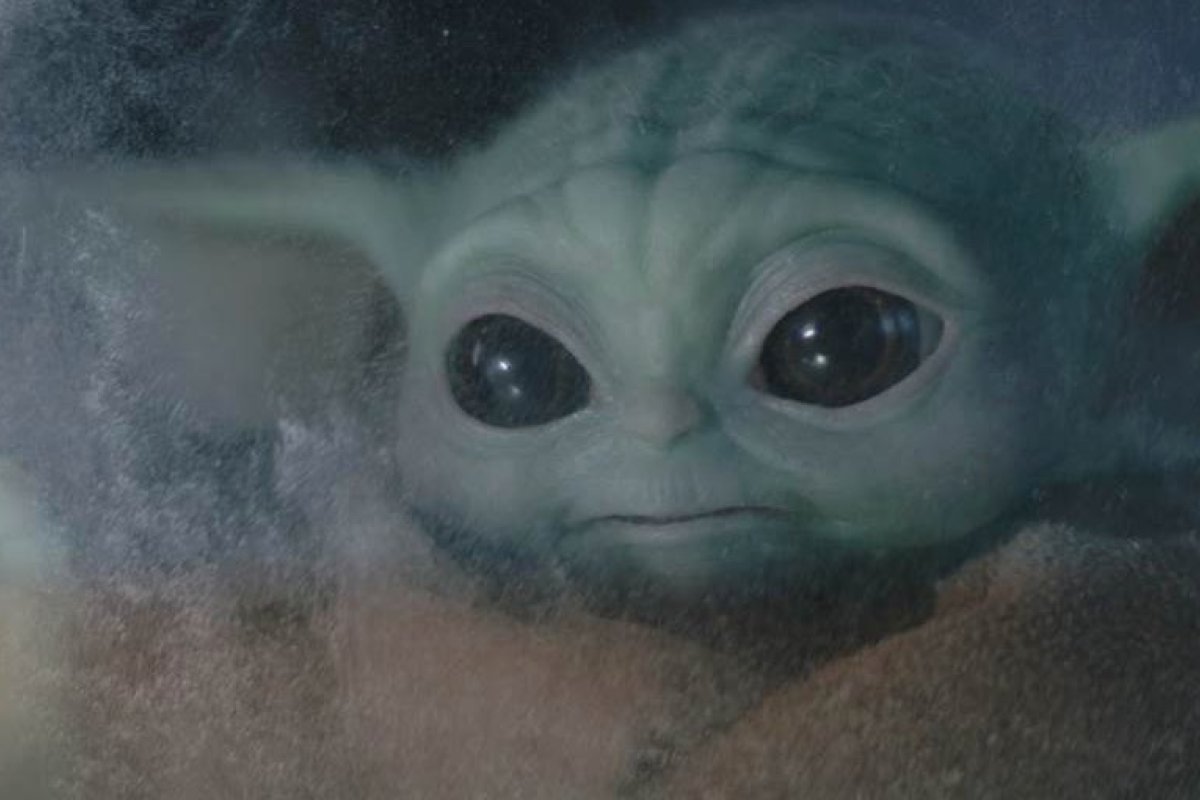
Religion and Isolation in The Mandalorian
Baby Yoda, helmets, and a mysterious tradition serve as a lens for understanding our current state of estrangement.
Editor's Note: The following column contains minor spoilers for The Mandalorian.
“Is it true that you guys never take off your helmets?”
This line, from the opening scene in Disney’s wildly successful Star Wars streaming show The Mandalorian, is viewers’ first indication that the protagonist is not just a lone wolf. He’s part of something bigger than himself. As viewers learn over the course of the series, the bounty hunter protagonist adheres to “the Way of the Mandalore,” a religious creed. The show does not reveal much about the doctrines and rituals of the Mandalorians, but it does paint a fascinating picture of life as part of a dwindling and threatened religious minority. One reason why The Mandalorian resonates with audiences, particularly in a time of quarantine, is the way it treats religious isolation.
Religious influences are common in the Star Wars universe. Creator George Lucas explained that he combined elements from existing religious traditions to create the mythology of the film series. The Jedi religion shares similarities with Buddhism, Christianity, Daoism, and others.
The similarities are a bit harder to trace when we look at the Way of the Mandalore. Mandalorian commitment to care for orphans and foundlings has echoes in Islam, Buddhism, and other faiths. The protagonist, Din Djarin, says, “Weapons are a part of my religion.” That could remind us of Sikhism... or Texas. Mandalorians repeat the mantra “This is the way.” That sounds like Christianity, or perhaps Daoism, or just a vague, generic sci-fi cult. They also have a fondness for wearing unique headgear and taking care of children. Maybe they’re Shriners?
If references to Mandalorian beliefs and practices are sparse in the show, so are Mandalorians. We learn early on that there are very few of them. Most people know about them only through stories. As the show progresses, we learn the tragic reason why. Many Mandalorians were slaughtered in the “Night of a Thousand Tears,” part of a “Great Purge” perpetrated by the Empire. Those who survived are committed to protecting one another, and yet divided when it comes to next steps. In a recent episode, Din Djarin meets another group of Mandalorians who do not share his most sacred religious commitments (they take off their helmets) and who are trying to recover the Mandalorian home world. Their interactions point to another religious resonance, as the show seems to be alluding to post-Shoah debates over Jewish identity. While I’m not convinced season 3 will find Din Djarin in a crisis of faith à la Chaim Potok, the show is setting up for an interesting clash of interpretations about what it means to be Mandalorian. What does “the Way” look like now, and who gets to decide?
In the first season, Din Djarin bonds with a character identified only as The Child, although immediately named “Baby Yoda” by fans. The Mandalorian armorer tells Din Djarin, “A foundling is in your care. By Creed, until it is of age or reunited with its own kind, you are as its father. This is the Way.” But he is not only taking care of the Child because of the Mandalorian Creed, but because the Child reminds him of his younger self. The connection that binds these two characters together in the first season is the fact that they are both foundlings. As the season unfolds, we watch how these two orphans become family for one another.
Viewers are made keenly aware that neither character have other known relatives. In one episode, Din Djarin visits a quiet farming village and is tempted to—in the words of another character—“slip off the helmet, settle down with that beautiful young widow, and raise your kids.” The decision is framed around his helmet, and the symbolic significance of him removing it would be an abandonment of the creed that has given his life meaning. He would be gaining community but losing identity.
The second season, by contrast, has less to do with family and more to do with religious isolation. Both Din Djarin and the Child are religious minorities, disconnected from any others in their respective traditions. Din Djarin is on a quest to find another Mandalorian and is disappointed to find only people who wear Mandalorian armor but do not share his commitment to the Way. He is also searching for another Jedi to raise and train the Child, though he is soon informed “there aren’t many Jedi left.”
Lone fighters with tragic pasts traveling from village to village are a staple of samurai movies, kung fu shows, and westerns, all of which influence The Mandalorian. What makes The Mandalorian different is its focus on religion. Mandalorian, we are told, is not the name of a tribe, but of a creed. The characters are disconnected not principally from their homelands, but from their religious communities. Thus The Mandalorian is, purely accidentally, a fitting show for a time when so many people are unable to share sacraments, go on pilgrimages, form minyans, perform rituals, or meditate together.
In one scene, Din Djarin, the Child, and their passenger are riding together in a spaceship. The only thing that connects the three of them is the fact that they seem to be among the last of their respective kinds. The passenger is soon reunited with her husband, but the Mandalorian and the young Jedi remain alone together. It’s not clear whether the future for these characters will bring them similar reunions, or whether their own unique bond—indeed, a bond over their uniqueness—is all that will sustain them. Viewers, often more isolated now than before, are happy to journey into uncertainty alongside them.
Image: Disney.
Sightings is edited by Daniel Owings, a PhD Candidate in Theology at the Divinity School. Sign up here to receive Sightings via email. You can also follow us on Facebook and Twitter. The views and opinions expressed in this article are those of the author and do not necessarily reflect the position of the Marty Center or its editor.


